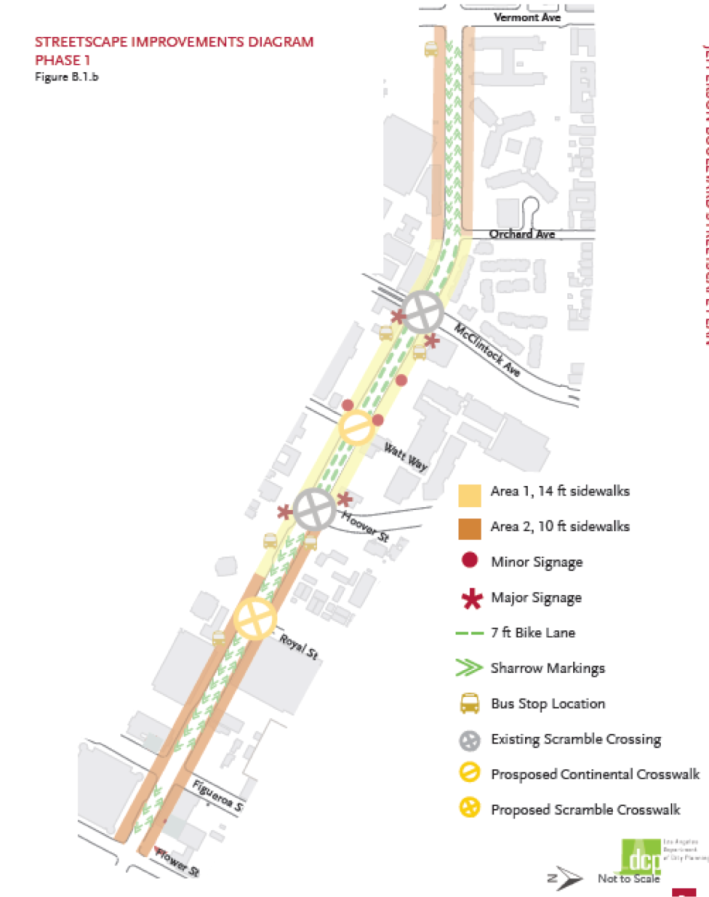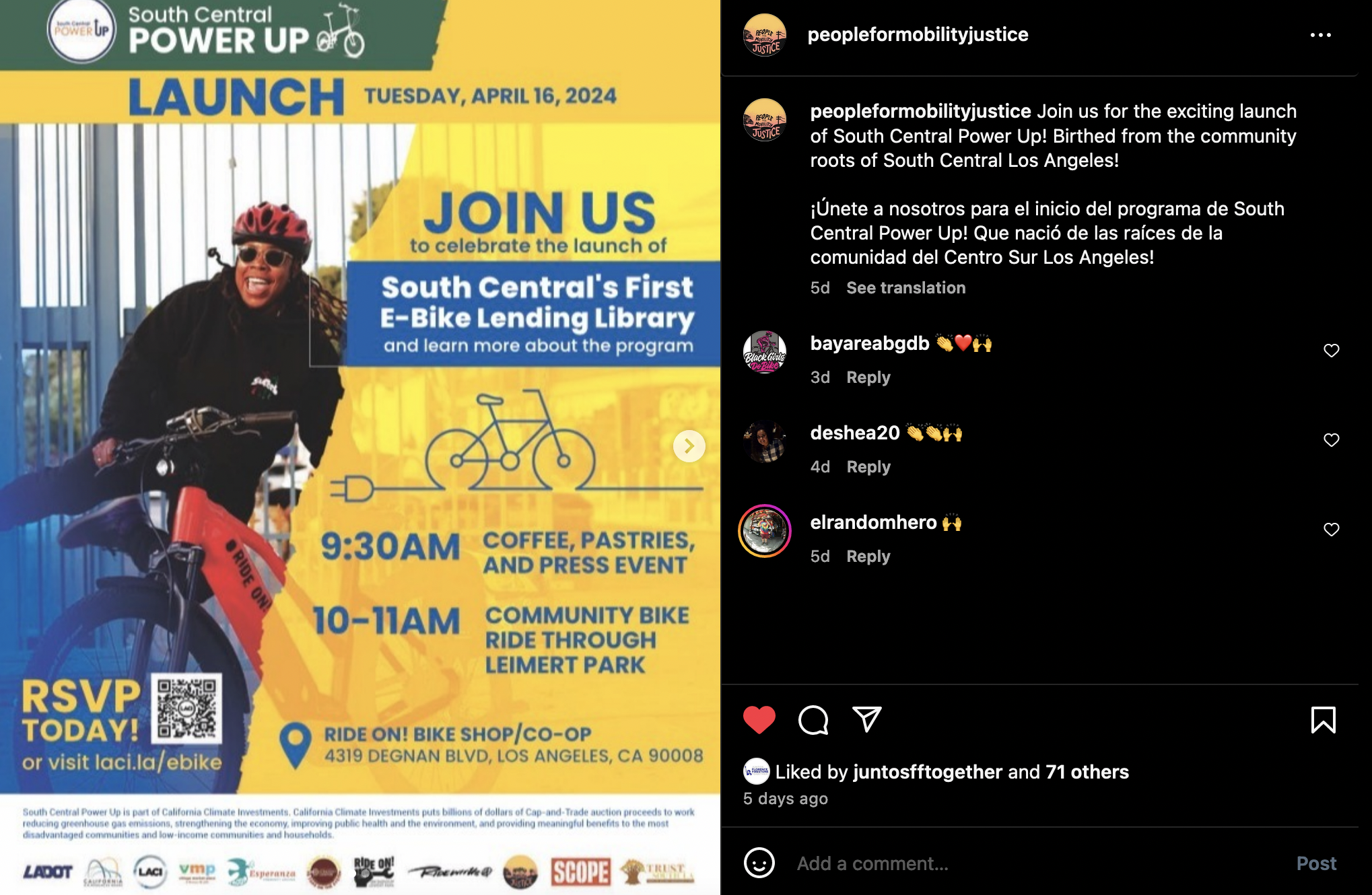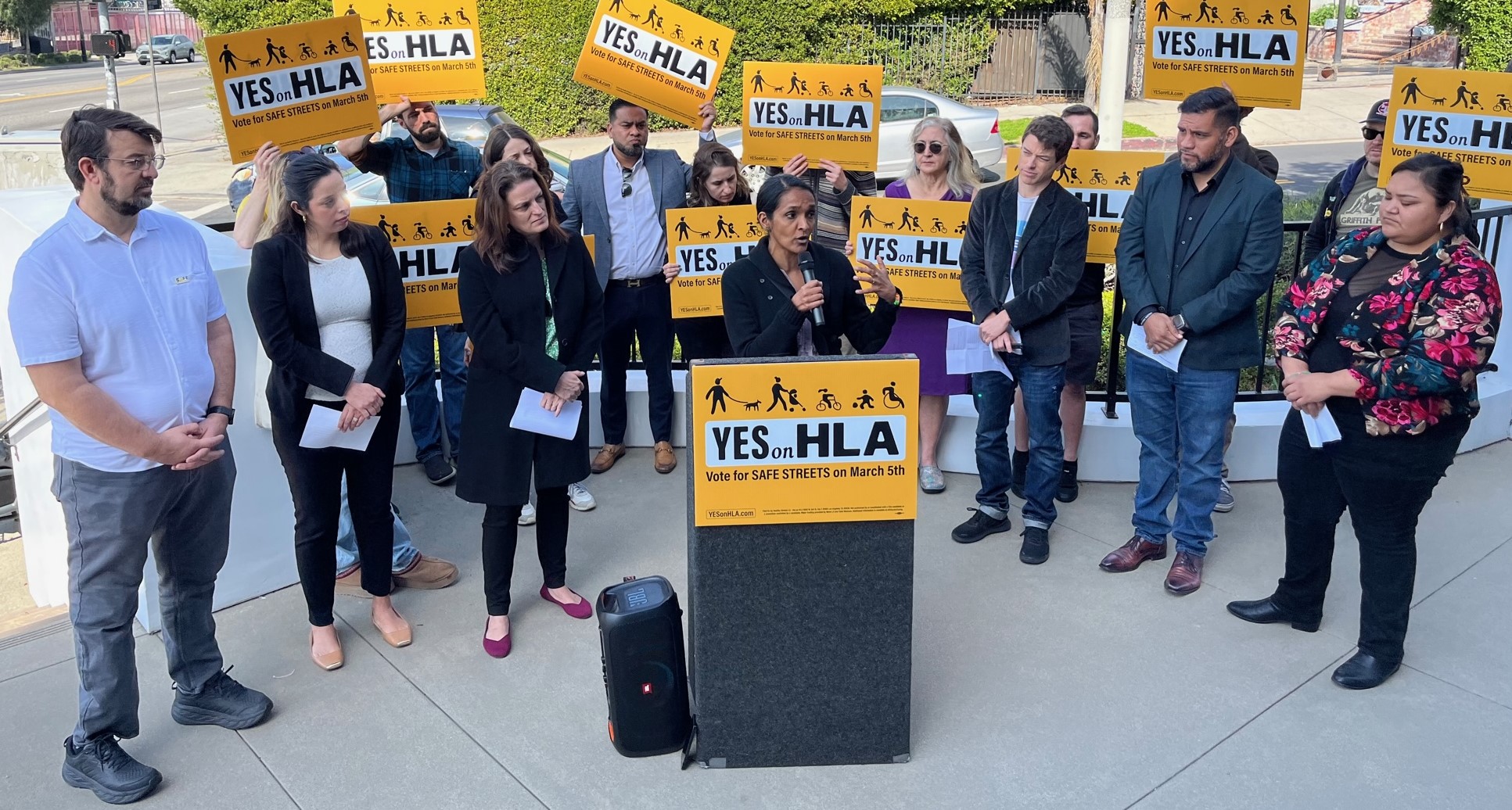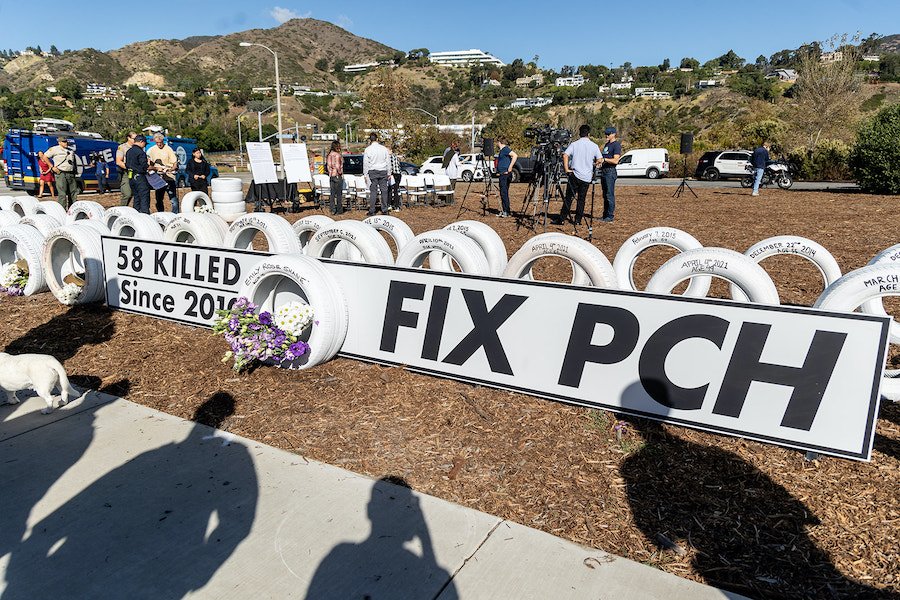USC Reneges on Some Commitments to Street Improvements Along Jefferson; Neighbors are Concerned
3:30 PM PST on November 21, 2013

"USC is prepared to enhance this public benefits package to include extending the boundaries of the graffiti abatement program to Western Ave., extending the bicycle lane on Jefferson to Western, [and] extending the proposed streetscape improvements and street trees to Western Ave.," said Dale Goldsmith, Land Use Counsel for USC in testimony before the Planning and Land Use Management (PLUM) committee hearing in May of last year.
He was speaking about the draft Development Agreement -- a legally-binding mutual agreement between the city and the developer that "allows for the orderly development of identified sites...in exchange for which the developer will provide specified community benefits targeted at improving the quality of life for local stakeholders" -- for the USC Specific Plan.
The original agreement, as drafted and up for review before the PLUM committee that day, did not include those benefits. The Jefferson streetscape improvements and bike lanes were slated to extend to Vermont on the west, at best, and to Flower on the east.
After meeting with local community representatives, block clubs, and church leaders that hoped to see USC build bridges with the community, however, USC apparently had since decided it would be prudent to include them.
Indeed, Goldsmith had concluded his remarks to the committee by saying USC "respectfully request[s] that you recommend that the City Council approve the Development Agreement with the additional enhanced public benefits offered here today."
PLUM committee president Bill Roschen asked, "Those additional community benefits -- do we have that in writing? Do you have a list of them?"
"Yes," Goldsmith answered. "Tom Sayles submitted a letter this morning; hopefully it's been distributed to you."
"Everything you discussed is listed in Tom's letter?" pressed Roschen.
"That's correct," answered Goldsmith (audio of USC's comments are available here; Goldsmith's testimony appears toward the end).
Given that testimony and earlier verbal commitments from Craig Keys (Associate Senior Vice President, Civic Engagement at USC), the community groups that believed they had negotiated a viable agreement with USC regarding improvements along Jefferson felt betrayed to find that the final Development Agreement not only did not contain those provisions, but that USC had back-tracked on some of the improvements and those left intact would be rolled out in phases, with no time-frame given for the improvements left out of Phase 1 plans.
Specifically, no mention is made of funding for street trees, pedestrian lighting, or streetscaping along Jefferson between Vermont and Western, and bike lanes are no longer going to extend between Vermont and Flower. Instead, parking will be removed and lanes will be painted between Hoover and Orchard, and the plan envisions sharrows between Vermont and Orchard and Hoover and Flower. Parking along stretches where sharrows are painted will remain in place until/unless the responsible party or owner determines the removal of parking is feasible. Or until a later phase of the development process.
The phasing of improvements make sense, to a degree, if the idea is to funnel students toward the new USC housing that will be built just north of campus. More infrastructure means it will be more attractive to students than housing in the surrounding area, possibly opening up more space for locals (at least, in theory) -- an outcome the community had been looking for when it negotiated a $20 million commitment from USC to create a fund to maintain affordable housing in the area.
But (one of) the problem(s) is that there is unlikely to be a coherent Phase 2 any time soon.
Many of the parcels along which the sharrows will run were either recently developed (i.e. the new Engemann Health Center, the Galen Center, or the recently completed University Gateway housing complex) or are unlikely to be re-developed now or in the next 20 years (i.e. the Shrine Auditorium or the 32nd Street schools). Meaning, that there will be no trigger for the improvements specified in the plan.
In short, community members told USC and city planners at a minimally publicized hearing on the Specific Plan earlier this month, by reneging on its commitment to the community, USC is building a "buffer" or a "wall" between themselves and their neighbors instead of a bridge.
Senior City Planner Craig Weber did not have good news for the jilted community members, telling them that he was unaware of the verbal agreement made regarding the extension of improvements to Western and that it was too late to make alterations to the Development Agreement as it had been adopted by the City Council.
Attempts to reassure the community that streetscaping would happen by noting that USC was required to pay the city $350,000 (to be put toward those improvements) prior to beginning construction of its new housing were not enough to pacify those present. Especially because, in a recent letter to the concerned stakeholders, Craig Keys had "acknowledge[d] the negotiations held with stakeholders concerning the bike lanes and related improvements" but said that the funds they would be paying into the city's coffers would be contributed to the Bicycle Plan Trust Fund and their use would be at the discretion of LADOT, not USC.
Some feared that this meant that the funds -- deemed not nearly sufficient to cover both lanes and streetscaping -- would mean that pedestrian improvements would be given short shrift.
Others, like the LACBC and its USC chapter protested that the plans, as currently laid out, did not go far enough to accommodate the thousands of people that commuted to campus from surrounding areas or hundreds of people on bikes that crossed Jefferson during peak hours. Some of their specific suggestions included improved bike access to the Expo Station along Vermont and Flower, extending lanes (not sharrows) to Western and Grand, and redesigning bicycle entrances to campus at key points along Jefferson to facilitate the safe movement of both bicyclists and pedestrians, among other things (full text of their comments can be found here).
While it is understandable that USC would attend first to improving conditions for its students, the entire goal of the intense and years-long negotiations between USC and the community in the development of the Specific Plan was to underscore the extent to which USC's well-being is linked to that of its neighbors. Even the success of the businesses that currently and will, in the future, populate the University Village area and make it a welcoming place for students, depends on the cultivation of year-round patrons, not just those here for the academic year.
And while USC has and continues to do much behind-the-scenes work to invest in educational resources for members of the surrounding community, for many neighbors, seeing is believing. And what they see between the construction of the gates, the continued prevalence of profiling of local youth on and around campus, and, now, the reneging on some of the commitments to the community regarding street improvements is that USC may not be sincere in its quest to be a good neighbor.
# # # #
For a look at the draft plans, slated to be adopted in December, please click here and here. More background can be found here, just click on the USC specific plan link at right (under "what's new").
If you'd like to sign the petition asking USC to honor its commitment to the Jefferson streetscaping, please click here.
For more on the quest of some USC students to have the gates around campus removed, please click here.
Sahra is Communities Editor for Streetsblog L.A., covering the intersection of mobility with race, class, history, representation, policing, housing, health, culture, community, and access to the public space in Boyle Heights and South Central Los Angeles.
Stay in touch
Sign up for our free newsletter
More from Streetsblog Los Angeles
This Week In Livable Streets
CicLAvia returns to Venice Boulevard, Metro board committees, L.A. City Council Transportation Committee, Metro budget theater, and more
Measure HLA Is Now Officially Law for L.A. City
Check the city maps to find what bus, bike, and walk improvements are coming to streets in your neighborhood




